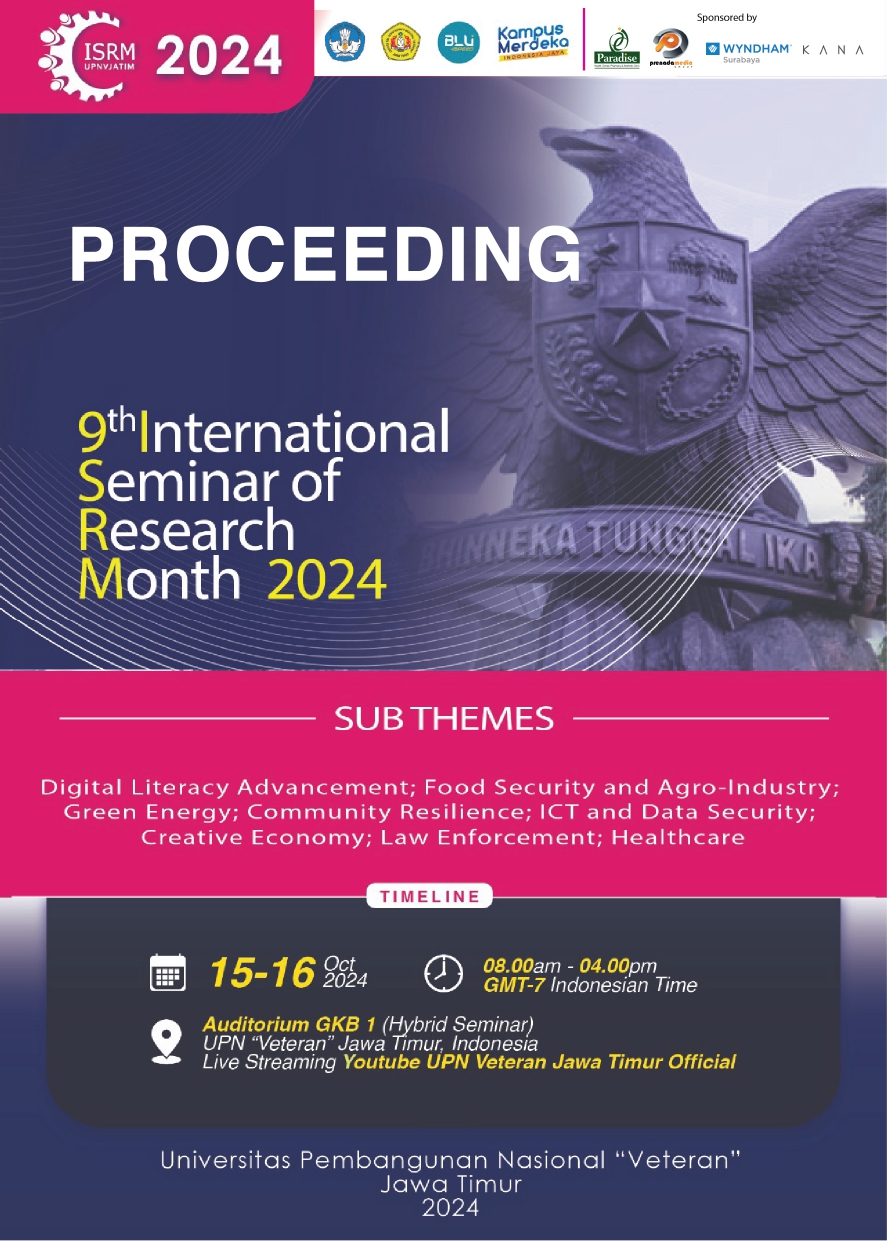Implementation of Smart Sensor Connected Hydroponic Shallot Seed (TSS) Planting Technology in Ketindan Village, Lawang Malang
DOI:
https://doi.org/10.11594/nstp.2025.47129Keywords:
Hydroponic, smart sensor, true shallot seedsAbstract
Hydroponics is a method or system of vegetable cultivation that does not require a large area of land. Therefore, hydroponics is one of the solutions to land limitations, and the products from hydroponics itself can be utilized by the community as materials that can be directly resold. One of the objectives of this community service activity is to provide a solution, namely a contribution from Higher Education institutions to teach people to start planting shallots from seeds so that they can provide their bulb vegetable needs independently. The location of the service is Ketindan Village, Lawang District, Malang Regency The stages of the activity include 1). Counseling to the community on hydroponic-based smart agriculture to plant shallots with seeds 2) hands-on practice by preparing quality-assured TSS seeds. TSS seeds are soaked overnight and then aerated. After that, the seeds are seeded first, for 10-14 days. Hydroponic preparation with net pots and nutrients, then the seeds are planted one by one in net pots Smart Farming, a technology-based smart agriculture method using a Smart Valve device connected to the Internet at the Ketindan Village office yard, Lawang Malang. The implementation of this activity has succeeded in significantly improving knowledge and skills. Overall, this activity succeeded in providing a positive impact on sustainable money, both in terms of technical, economic, and social aspects.
Downloads
References
Bezas, K., & Filippidou, F. (2023). The role of artificial intelligence and machine learning in smart and precision agriculture. Indonesian Journal of Computer Science, 12(4). doi:10.33022/ijcs.v12i4.3278
Hariono, T., Sujono, Yuliana, A. I., Ashoumi, H. (2024). Pelatihan implementasi teknologi smart hydroponic system kelompok petai hydroponic pogo farm di Kabupaten Jombang. GLOBAL ABDIMAS: Jurnal Pengabdian Masyarakat, 4(2), 77-84.
Kurniawan, A., and Lestari, H. A. (2020). Sistem kontrol nutrisi floating hydroponic system kangkung (Ipomea reptans) menggunakan internet of things berbasis Telegram. J Tek Pertan Lampung, 9(4), 326.
Prabowo, R. R., Kusnadi, K., & Subagio, R. T. (2020). Sistem monitoring dua pemberian pakan otomatis pada budidaya ikan menggunakan wemos dengan konsep Internet of Things (IoT). J. Digit, 10(2), 185.
Sucahyo, L., Solahudin, M., & Amarillis, S. (2023). Kajian sistem hidroponik menggunakan ultrasonic atomizer untuk pembibitan TS (True Shallot Seed) bawang merah. Jurnal Ilmiah Rekayasa Pertanian dan Biosistem, 11(1), 34-43.
Downloads
Published
Conference Proceedings Volume
Section
License
Copyright (c) 2025 Henny Ida Retno Moeljani, Agus Sulistyono, Al Humaira, Haris

This work is licensed under a Creative Commons Attribution 4.0 International License.
Authors who publish with this proceedings agree to the following terms:
Authors retain copyright and grant the Nusantara Science and Technology Proceedings right of first publication with the work simultaneously licensed under a Creative Commons Attribution License that allows others to share the work with an acknowledgement of the work's authorship and initial publication in this proceeding.
Authors are able to enter into separate, additional contractual arrangements for the non-exclusive distribution of the proceedings published version of the work (e.g., post it to an institutional repository or publish it in a book), with an acknowledgement of its initial publication in this proceeding.
Authors are permitted and encouraged to post their work online (e.g., in institutional repositories or on their website) prior to and during the submission process, as it can lead to productive exchanges, as well as earlier and greater citation of published work (See the Effect of Open Access).














